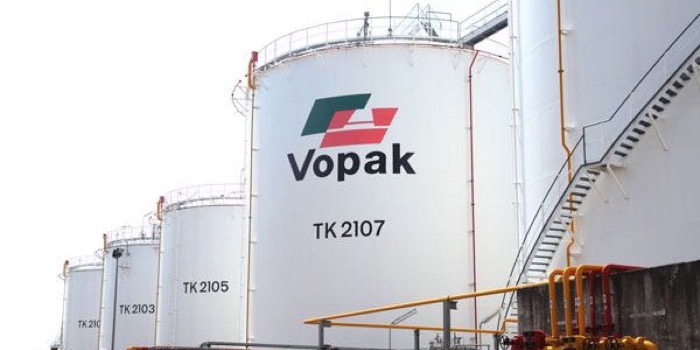Royal Vopak said it was given the “unique opportunity” to perform Asia’s very first online/no man entry inspection of a low flashpoint (ATEX zone 0) product tank, a project which it went on to successfully execute.
The project, which took place at Sebarok Terminal, Singapore, had two primary objectives: to demonstrate the ability to safely deploy an Online Tank Inspection (OTIS) robot in a tank with a low flashpoint product; and to perform an online inspection of the tank bottom in a limited time-frame.
Once the robot was deployed, several reconnaissance runs were completed. Throughout the runs, several observations were made of sediment and sludge on the tank bottom by cameras on the ROV.
Vopak said the areas of concern were “low flashpoint product; close cooperation and coordination between all stake holders; sediment/sludge layers up to 30cm consisting of fine rust particles; limited time frame to perform the inspection.”
The dimensions of the in-service naphta storage tank were 10,000 cbm naphta, 25.4m diameter, fixed roof, 24 inch manway entrance.
Vopak, the product owner and the local authorities conducted a thorough evaluation of the operational and equipment safety procedures along with the OTIS cleanliness and safety certifications. It said: “This review then aided in generating an extensive project plan, outlining all necessary preparations and safety procedures required prior to the deployment of the OTIS500 in tank TK-0702 with naphtha.
“This process allowed us to successfully execute the first primary objective. The second objective was to perform the actual online tank bottom inspection. After deployment, a significant layer of sediment was detected, impeding the inspection and resulting in reduced coverage of the tank bottom. Nevertheless, with the strong hardware of the OTIS and a properly trained crew, the robot was able to collect sufficient, accurate and high-quality online data to perform the corrosion assessment of the tank floor.”
The results obtained were compared with data from an earlier offline floorscan inspection and demonstrated clear correlation between both sets. “proving this deployment to be successful for both Intero and Vopak”.
This inspection was successfully executed in a time frame of six days. Once the data collection was finalised, a quality assurance and UT data analysis review was performed. The summary of anomalies reported included locations on the tank bottom and the remaining wall thicknesses.
All inspection operations were conducted in a safe and responsible manner while adhering to the relevant health and safety policies.
For more information visit www.vopak.com













